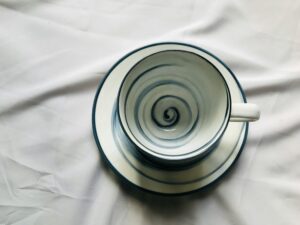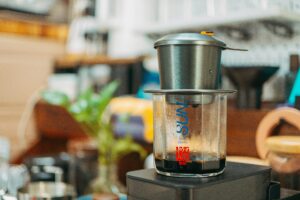Introduction
Few coffee experiences are as rich, sweet, and full of cultural pride as Cuban coffee, also known as cafecito or Café Cubano. This tiny but powerful espresso shot isn’t just a drink — it’s a tradition, a daily ritual, and a symbol of Cuban hospitality.
Table of Contents
What makes it unique? The secret lies in the espuma — a thick, sweet foam created by whipping sugar with the first few drops of espresso. The result is a strong, sweet, and smooth coffee that captures the heart of Cuban culture.
Whether you’ve tasted cafecito in Miami’s Little Havana or are discovering it for the first time, this guide will walk you through its origins, ingredients, and step-by-step preparation so you can recreate the authentic flavor at home.
What is Cuban Coffee?
A Cultural Icon
Cuban coffee is a sweetened espresso drink that originated in Cuba and became a daily staple for Cubans both on the island and in diaspora communities worldwide. It’s usually enjoyed socially — shared among friends, family, or co-workers — often accompanied by lively conversation.
Key Characteristics
- Strong flavor: Brewed using dark-roasted Cuban-style coffee beans
- Sweet espuma: Created by beating sugar with the first espresso drops
- Small serving: Typically served in small espresso cups, but meant to be shared
Ingredients for Authentic Cuban Coffee
You only need a few ingredients, but quality matters:
- 2 tablespoons finely ground dark roast Cuban coffee (brands like Café Bustelo or Pilon)
- 2–3 teaspoons granulated sugar (traditional recipes use white sugar)
- Filtered water
Equipment You’ll Need
- Espresso maker or moka pot (a stovetop espresso maker is the most traditional choice)
- Metal spoon (to whip the sugar)
- Small espresso cups (demitasse)
How to Make Authentic Cuban Coffee (Cafecito)
Step 1: Prepare Your Coffee Maker
Fill the bottom chamber of your moka pot with filtered water up to the safety valve. Place finely ground Cuban coffee into the filter basket and level it off — do not tamp it down.
Step 2: Start Brewing
As the coffee begins to brew, watch closely. The first few drops that come out are the most concentrated and flavorful — these are essential for making the espuma.
Step 3: Make the Espuma
In a small cup or metal pitcher, add the sugar. Pour in about 1 teaspoon of those first coffee drops and quickly stir or whisk vigorously until the mixture becomes thick and creamy. This process creates the signature sweet foam that defines Cuban coffee.
Step 4: Finish Brewing and Combine
Once the rest of the coffee has brewed, pour it slowly over the espuma while stirring gently. This ensures the foam blends evenly into the coffee, giving you that signature sweet, velvety taste.
Step 5: Serve and Share
Pour into small espresso cups and serve immediately. Traditionally, even a single cafecito is shared among several people — passing around the tiny cups to enjoy together.
Tips for the Best Cuban Coffee
Use the Right Coffee
Choose a dark roast coffee with bold flavor. Brands like Café Bustelo, Pilon, and La Llave are staples in Cuban households.
Master the Espuma
The quality of your espuma can make or break your cafecito. Whip until the sugar is completely dissolved and the mixture is thick but airy.
Serve Fresh
Cuban coffee is best enjoyed immediately after brewing while it’s hot and aromatic.
Variations of Cuban Coffee
Colada
A larger serving of Cuban coffee meant for sharing, usually poured into small plastic cups when ordered at cafés in Miami.
Cortadito
Cuban coffee topped with steamed milk, creating a creamier, slightly less intense drink.
Café con Leche
A breakfast favorite — a larger cup of hot milk served alongside a shot of Cuban coffee, often enjoyed with buttered toast.
Cuban Coffee in Culture
In Cuban communities, coffee isn’t just a beverage — it’s a social connector. Offering someone a cafecito is a gesture of friendship and hospitality. In Miami, street-side ventanitas (coffee windows) are iconic spots where locals gather to grab a quick coffee and catch up.
Conclusion
Authentic Cuban coffee is more than just an espresso with sugar — it’s a cultural tradition that blends bold flavor with heartfelt hospitality. By mastering the espuma and using rich, dark-roasted Cuban coffee, you can bring a taste of Havana into your home.
So, brew a cafecito, invite a friend, and share a cup — because the joy of Cuban coffee is best enjoyed together.






